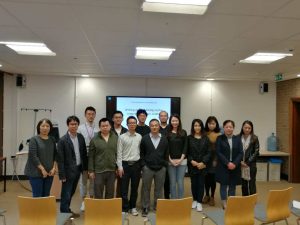The story about this Yangtze River New City (YRNC) has come and gone, like wind, through the hot summer Wuhan. I have joined several talks and media interviews about it. Confused, about what is going on.
People are shrilled to see the glorious and shining future, as indicated by its plan, yet no one knows what is going to happen. The place it is going to built locates in the north suburbs, filled by transportation lines, so that the land could be hard to use. But it is decided, and it is said to be built. Every new mayor wants something new, the ‘beginning’ of a new era, and the ‘beginning’ made by talking, reporting, and media bombing. The Chinese style of urban management.
For Wuhan, its slogan is ‘wuhan is different everyday’, it just wants something new, and dislikes the old ones. New City is also quite political right, as Beijing is also building a new city, Xiong’an, the new giant of urban China, not existed at all, but already becomes the pioneer and ‘model’ of other cities, such as Tianjin’s Seaside New City, as put by the leader there. Of course, Wuhan wants to follow Beijing, and it must follow.
Yet Wuhan already had so many new cities, nine ‘subway-related small towns’ in the suburbs, one China-France Ecological City in Caidian District, so on and so force. New City is everywhere, in Wuhan. But for leaders, the more the better. Cause the city has to sell lands to earn, playing ‘land finance’, and maintaining its high speed infrastructure constructions. Expansion is the theme of the city today. Leaders compete against each others, to expand land use. It is the same for the schools, subjects and individuals in universities. You have to expand and maintain the growth, otherwise you will lose. Urban China, indeed, is a growth machine, different everyday. Why? because we care. We care about the history of underdeveloped, we care about starving, and we care about the future, as there may be nothing to earn, eat, or stay alive. In the deep heart of Chinese, there is a deep fear of losing games.
But life and existence is by no means a game. It is a process, a marathon. The urban needs time, wait, and patience to move forward. When we get ill, we can feel the truth of life, and start to feel and enjoy it. For cities, it is the same. One day, we will regret for our anxiety, impatience, and restless. There are so many high-rise and concrete buildings, so hard to fix, demolish, and rebuild. We are so selfish – though we care so much about our kids, we send them to training, to learning, to exercising, every weekends, yet what we leave to them is a mess of ugly buildings, constructions and bubbled financial systems.
长江新城成武汉最热话题,院士专家有话说!


 I knew, I was born there, and grown several months there, during the winter of 1976, a very cold one. My mom once said, she had to go to the lake to dig ice for accessing water. Winter is no longer s
I knew, I was born there, and grown several months there, during the winter of 1976, a very cold one. My mom once said, she had to go to the lake to dig ice for accessing water. Winter is no longer s the roads that once very
the roads that once very and my kids also have. When I stood beside the graves of relatives, grandma, grandpa, father’s brother and his wife, etc., I can feel there are the same blood underlying the lands. My father once said after death he want to be back here, back home, with his parents, brother and sister. The village is no longer the old village, it is new, yet it is still old…
and my kids also have. When I stood beside the graves of relatives, grandma, grandpa, father’s brother and his wife, etc., I can feel there are the same blood underlying the lands. My father once said after death he want to be back here, back home, with his parents, brother and sister. The village is no longer the old village, it is new, yet it is still old…


